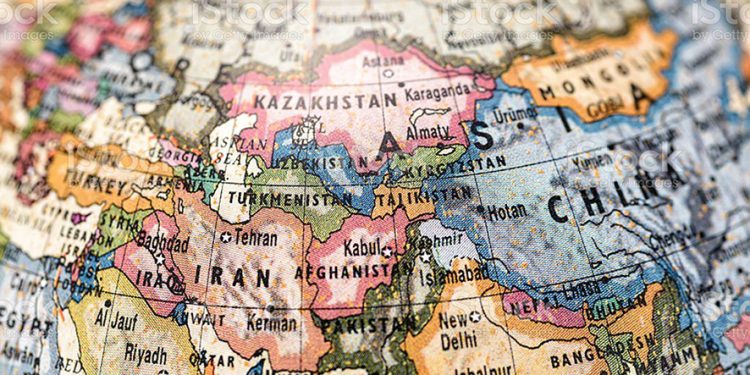Read Part 1.
Read Part 2.
Say: Polelss or Mulripolar? Well, this is not a play on words, because – whether poleless or multipolar – they have essentially different effects. Nevertheless, they are both characterized by the fact that there is no single global hegemony or “collusion” between the two superpowers to share global influences. However, the similarities between the two end here, and further on, differences emerge. In some places this difference is structural, in some places it is functional, but in both cases, we arrive at different regimes of global (dis)order.
The poleless system is characterized not only by the abundance and diversity of “decision-makers”. Along with quantity, this system has serious functional shortcomings, which ultimately manifests itself in haphazard and highly unstable international relations. Moreover, in the face of a specific global threat and challenge, a poleless system may even undergo collapse. In short, the connection between power and influence is very weak, if not almost non-existent, in a poleless system. Some may like it, but with today’s complex challenges, the absence of such a connection creates a rift bordering on uncontrollability and chaos. Thus, a poleless system (or haphazardness) can only serve as a backdrop for academic study of other systems. And for the practical purposes of governance or the foreseeable conduct of international affairs, the value of this model, devoid of actual responsibility, is close to zero.
Hence, from a realistic point of view, a possible alternative to the bipolarity replacing the unipolar order is multilateral, that is, a multipolar system of arrangement, about which we have to share with the reader some already known issues and touch on some aspects seen in a new way.
Multipolarity in the Modern Sense
Contrary to popular stereotype, the multipolar order should not be understood as an unrestricted and unlimited admission of anyone who wishes to join the “multipolar club”.
The original understanding of the multipolar world order was based on the coordinated (cooperative) actions of several states or groups of states, the purpose of which was to provide an intelligible system of relations that pleased some and was disliked by others. Simply put, the “big ones” set the rules of the game for themselves as well as for the “small ones”; the “big ones” also determine the forms of “disciplinary punishment” for violation of these rules; And the whole system is built on a balance of power and equilibrium acceptable to the “majority shareholders”.
As for the multipolar order as it is understood today, another characteristic of it is that it has gone beyond its original limits, which at the time was defined only by the participation of states in international relations. As these relations have gradually changed their essence and character, the influential poles are not only related to the capacity to act as a capable subject of countries. The global distribution of influence also involves inter-state groupings (e.g., the European Union), large international financial organizations (e.g., the World Bank and the International Monetary Fund – the pillars of the “Washington Consensus”), sovereign funds (e.g., the Qatar Sovereign Fund) or transnational corporations (Google, Amazon, etc., to name a few). Moreover, such quasi-state actors claim their share of the multipolar world, which by virtue of the power factor have a say in both internal and external affairs of a particular country (one of the brightest manifestations is the Guards Corps of the Islamic Revolution of Iran, the “Wagnerian” formation). Despite this multiplicity, power and influence are still selectively distributed among the participants of the system, which contributes to a guaranteed minimum degree of stability and coherence in terms of international security and economic order. This situation does not exclude elements of unipolarity by inertia, but even in this case an ex-unipolar (former hegemon) country has to take into account the interests of others and cannot act in the old way, without looking back.
Since we started talking about the multipolar order, in addition to the above, it is necessary to mention some specific elements.
The Overall Effect of Regionalization
We mentioned the need to diversify the various actors of the system in a multipolar world, and this was correct. In addition, the possible transition to multipolarity will be characterized by the emergence or consolidation of major georegional centers. Most of the issues related to regional interests and influences will be formed within such centers – a kind of geo-political and geo-economic geographical hubs, and will be solved within the same context.
The stability of the global international order based on such a “regional networking” will depend on the coincidence of interests in the space of a particular region, as well as on the reconciliation of interests with other major regional centers and on coordination with each other. At such a time, the prevention of large-scale world conflicts (the so-called proxy war, typical of the Cold War period, will probably still be on the agenda) will again and again be conditioned by finding the right balance of power.
It should be noted that a large region of the Black Sea is currently being formed as one such large geographical area, and in this process the increasing role of not only intra-regional – the so-called regional superpowers, but also of “external” global superpowers is being felt with every passing day.
Regionalization by Interests
The formation of mini-alliances or groups of states is probably one of the most relevant areas, which we, as a country in the Black Sea region, should pay special attention to. Practically, we are talking about “situational associations” united on the basis of the principle of coincidence of interests and around a certain agenda, which have no special formal rules. For the most part, such associations are formed and operate outside the formal institutions that come with the existing world order. To illustrate this trend, it is enough to mention such situational, so-called ad hoc mini-alliances as AUKUS (Australia, Great Britain, USA), QUAD (USA, Australia, India, Japan) or I2U2 (India, Israel, United Emirates, USA).
A situational alliance based on interests is a kind of intermediate model between a bipolar and a multipolar world. In the same context, the question is very relevant: to what extent does this trend contribute to stability in the world and the prevention of conflicts? Does this trend create additional preconditions for fragmentation in terms of the possibility to manage global processes?
Of course, these questions are reasonable. However, one or another answer to them will still be preliminary and intermediate, since a clear and final position must be formed by the relatively long-term practice. That said, one thing is already clear: one way or another, in order to take care of security, the unification of regions by interests is a direct response to the inefficiency and ineffectiveness of existing security systems. In its essence, the association of the mentioned category is more practical, flexible, economical and purposeful, which, compared with large bureaucratic organizations, creates the prerequisites for a faster and more adequate response to the problem.
It should also be noted that regional mini-alliances are able to cooperate not only on security issues, but also on other topics of interest to them (for example, the tasks of I2U2 include technology and infrastructure, while the narrow specialty of Five Eyes is intelligence sharing). With less bureaucracy in decision-making, an alliance is much better able to focus on geographies relevant to it, saving it from wasting resources on “secondary geographies”. The relative advantage to be highlighted here is the practical, rather than ideological, considerations of joining a mini-alliance or interest group. In other words, the potential member state makes this decision to pursue its interests subject to rational alignment with the interests of other member states. As a result, the decision-making process is as free as possible from unnecessary conceptual “isms,” ideological dogmas or unnecessary hypocrisy.
With this in mind and in the context of the above trend, we would like to once again draw the reader’s attention to the Great Black Sea Region and the need to form a thematic alliance within it. We spoke many times about the specific mechanism in the past. And this time we will again raise the initiative of a framework document of the Black Sea Declaration, discussed in one of the previous articles, which would serve the political and economic integration of the countries of the region, including a modern consultation and coordination format, adapted to the times and the needs of new channels of communication.
Such a declaration emphasizes the importance of the Black Sea region for the stability of the world and the region. Along with a number of relevant topics, the declaration: (1) Stresses the partnership of the parties for regional security; (2) Specifically considers the region as a territory free from harmful influences and “zones of special interest”; (3) Emphasizes the need to raise funds for the diversification of regional infrastructure, as well as the need to implement socially and environmentally sustainable projects in the region; (4) Points to frozen so-called ethnic, but in fact geopolitical conflicts, and expresses support for the sovereignty and territorial integrity of the countries of the Black Sea region; (5) Provides a platform to discuss current issues of regional security, such as challenges related to terrorism and illegal migration; (6) Outlines directions for free trade agreements and blocs of regional scope.
In addition to the above, the attention of the declarants would be additionally and specifically focused on attracting investment to the region. As one of the specific initiatives, we would consider, for example, the initiation of the “Black Sea Prosperity (Development) Belt” under the declaration of a major regional project. The objectives of the project would include the mobilization of financial resources for the development of regional infrastructure, as well as reducing dependence on certain energy sources, the implementation of social and environmental target programs, etc. As it stands today, the “belt” concept organically encompasses recent statements about two major projects, the Black Sea submarine cable and the Anaklia Deep Sea Port. The same line would be strengthened by the successful implementation of the Middle Corridor in the shortest possible time, with the political and economic dividends coming from it for our country and the region.
Here, we should also add that to ensure the necessary functional quality we should consider holding regular summits of the highest rank at the level of heads of member state of the declaration and high-ranking representatives of strategic partners and allies. The main goal of regular summits is to support the independence, sovereignty and territorial integrity of the countries of the region. Topics of discussion among summit participants should also include the real geopolitical (rather than so-called “ethnic”) conflicts in the region, regional security in general, international terrorism, cyber security, illegal migration and other pressing issues and challenges.
To be continued in next week’s GT.
By Victor Kipiani, Chairperson of Geocase













